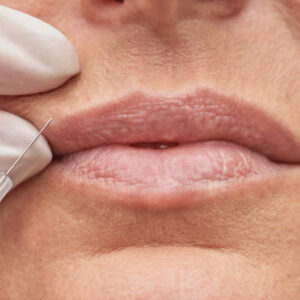Getting enough sleep is essential for anyone undergoing Total Parenteral Nutrition (TPN), especially when managing it at home. A good night’s rest supports healing, helps maintain energy, and allows the body to better absorb the benefits of nutrition. However, sleeping while connected to a TPN infusion system can bring its own set of challenges. Tubes, pumps, and equipment may feel unfamiliar at first, but over time, sleep can become restful and uninterrupted again.
TPN is typically administered overnight to allow freedom during the day. Learning how to sleep comfortably with TPN at Home Dubai is not just about physical adjustments—it also includes mental preparation, environment setup, and consistent habits.
Choosing a Comfortable Sleep Position
Finding the right sleeping position is one of the first and most important steps. Everyone has different preferences, but certain positions are more favorable when connected to a central line and infusion pump. Many people find that sleeping on their back is the safest and most comfortable option. This position keeps the catheter site from being pressed or twisted and minimizes tension on the tubing.
For side sleepers, some adjustments may be needed to prevent pulling or discomfort. Placing a soft pillow under the tubing can help reduce pressure and avoid entanglement. It may take a few nights to discover which position offers the best support and the least disruption.
Keeping Tubing and Equipment Secure
One of the most common sleep interruptions during TPN is caused by the movement of tubing. Keeping the line organized is essential for a restful night. Many individuals use gentle loops or soft fasteners to guide the tubing safely around the bed or their body. This reduces tugging and avoids sudden jolts if a limb moves during sleep.
Make sure the tubing has enough slack to allow turning slightly from one side to the other. At the same time, it should be secure enough to avoid getting tangled or caught in sheets and blankets. With practice, it becomes easier to manage line positioning without thinking twice.

Setting Up a Relaxing Sleep Environment
The sleep environment plays a major role in comfort. A cool, dark, and quiet room promotes deeper rest and makes it easier to fall asleep. In homes where noise is an issue, a gentle fan or white noise machine can mask background sounds. Keeping lighting soft before bedtime helps signal the brain that it’s time to wind down.
Keep the infusion pump on a stable surface next to the bed or in a small rolling stand. Its placement should allow tubing to reach comfortably without strain. Some pumps make low operational sounds—getting used to them can take a few nights, but most people adapt quickly.
Wearing Sleep-Friendly Clothing
The right sleepwear can make a big difference in comfort while on TPN. Choose soft, breathable clothing that allows free movement and doesn’t rub or press against the catheter area. Some people prefer loose tops with shoulder snaps or short zippers for easy access if needed.
Avoid tight waistbands, heavy materials, or anything that might shift tubing during the night. Soft fabrics and loose-fitting clothes not only improve comfort but also reduce heat and irritation around the line.
Establishing a Bedtime Routine
A consistent nighttime routine signals the body and mind that it’s time to rest. About an hour before bed, begin winding down by turning off bright lights, limiting stimulating activities, and preparing your TPN supplies calmly. This is the ideal time to check equipment, clean hands, and start the infusion without feeling rushed.
Once everything is set up, allow yourself a few moments to relax. Whether through reading, deep breathing, or light stretching, creating a quiet ritual before bed helps reduce tension and supports more restful sleep.
Addressing Common Disruptions
In the early stages of managing TPN at home, sleep may be interrupted occasionally. Tubing adjustments, pump alarms, or mental restlessness can interfere with rest. Over time, these disruptions typically lessen as habits form and confidence grows.
Keeping a small light near the bed can help during unexpected awakenings without turning on bright overhead lighting. If the pump beeps or tubing needs repositioning, staying calm and focused can help you solve the issue without fully waking up or becoming anxious.
Gaining Confidence Over Time
At first, the idea of sleeping while on TPN may feel overwhelming. There’s concern about movement, comfort, and getting enough rest. However, most people find that within a few weeks, they develop a rhythm that works. The unfamiliar process becomes second nature, and sleep improves significantly.
Having confidence in your setup and habits allows you to focus less on what could go wrong and more on getting the rest you need. Each night builds experience and comfort.
Living Fully with TPN at Home in Dubai
For individuals managing TPN at Home in Dubai, restful sleep is part of a broader goal: maintaining strength, energy, and independence. Creating a sleep routine that supports your overall well-being allows you to participate fully in everyday life while receiving the nutrition your body needs.
A successful night’s rest leads to a better day ahead—more alertness, more focus, and a greater ability to enjoy small daily moments. With patience and small adjustments, sleep becomes a peaceful part of your home care plan.
Safe Sleeping Practices with TPN
Safety and comfort go hand in hand. Before sleeping, ensure all connections are tight, the pump is operating correctly, and supplies are nearby in case adjustments are needed. Check that tubing is not at risk of being pulled if you turn or shift in bed.
These small checks build into your nightly routine and become automatic over time. They help prevent sleep disturbances and make sure you feel at ease before drifting off.
Conclusion
Sleeping with TPN at home may feel unfamiliar in the beginning, but with the right habits and mindset, it becomes comfortable and natural. Simple adjustments in your sleep environment, clothing, position, and equipment placement can make all the difference. As time passes, what once seemed like a challenge becomes just another part of your routine.
For those living with TPN at Home in Dubai learning how to sleep comfortably is a valuable step in maintaining physical health and emotional balance. Restful nights lead to stronger days—and that strength is what helps turn medical routines into a lifestyle that supports healing and independence.






